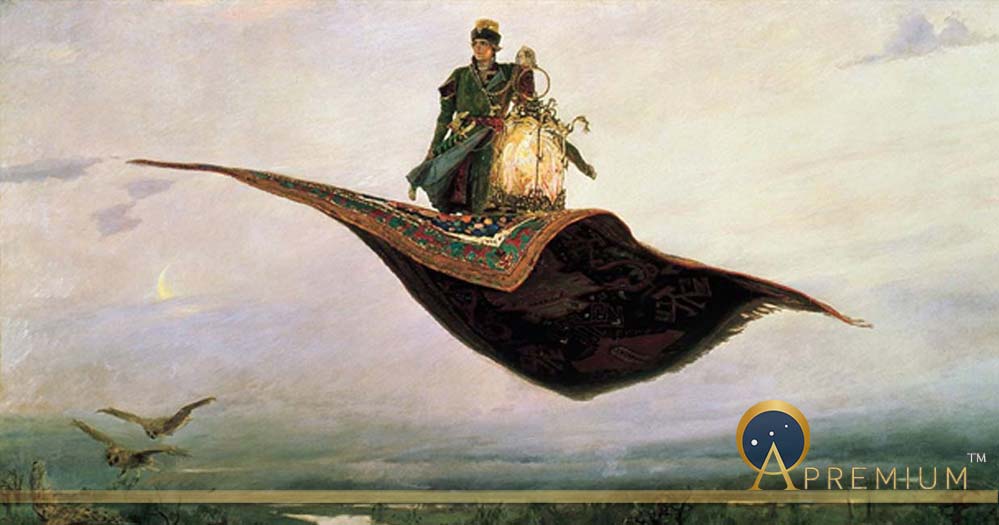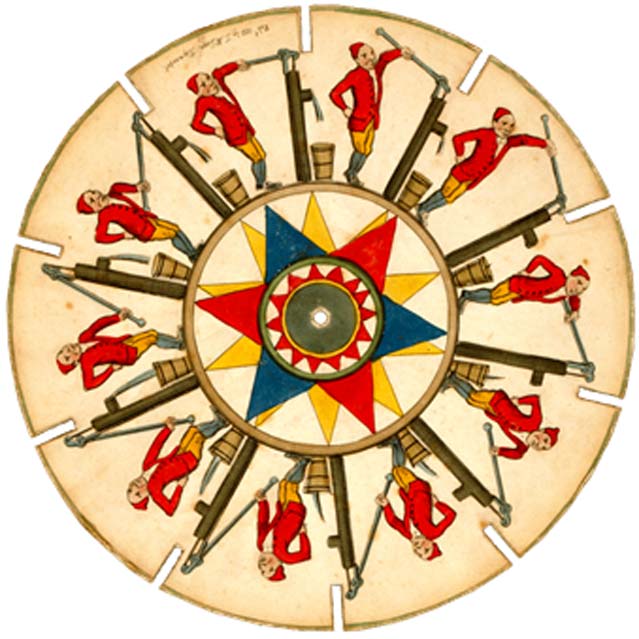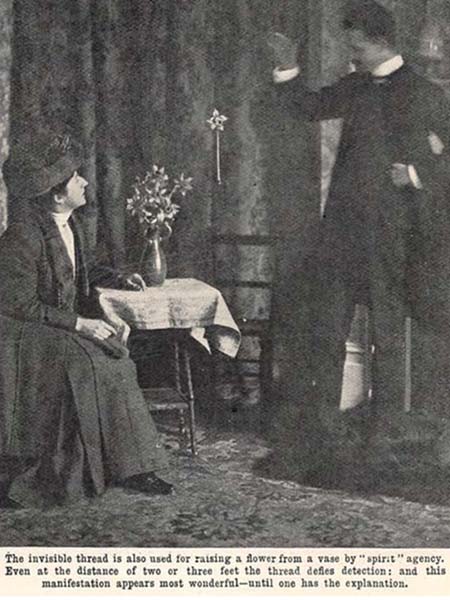
Ancient Levitation – Magicians Secret Crafts Revealed
- By ashley cowie
- 0
Since the dawn of its existence, mankind has developed survival skills. One of the very basic survival skills modern man does not even pay much attention to, is the need to make sense of our environment. If we can anticipate the next actions of a predator, or an opponent, we can counter an attack and survive. This primitive survival mechanism operates within the parameters of our subconscious reptile brain. Our incoming senses register – we see a snake - and a message is relayed down the spine at lightning speed – we jump. This is an automatic reaction. Only later may our rational brains take charge and reason that it was a fake snake. What we think we see, is often not what we are looking at. This concept is illustrated in the notes of a 15th century book written by a natural born trickster, Thomas Betson, a monk at Syon Abbey in Middlesex. Forsaking the code of secrecy of illusionists, Betson wrote down the inner mechanics of a trick in which he stashed a ‘beetle inside a hollowed-out apple so that when it began to mysteriously rock back and forth, people believed it to be possessed’.

Our brains will try to make sense of what we see. (Photo by Muu-karhu CC BY-SA 3.0)
It would have taken a pretty smart person to have watched that apple wobbling on a table and to have suspected that a tiny creature might have been hidden inside it. Most of us, based on the available data provided by our five sensory streams, would have measured up the legs of the table or looked for signs of a thread having been attached to the apple. But a hidden beetle! Who would have thought!
Let us now jump from this 15th century magic trick to your home on a Sunday morning. You are trying to watch YouTube, while the kids are online gaming and granny is on Skype, all at the same time. Your router really struggles to handle the data flow and you notice a slowing down in processing speed. Similarly, when we experience a visual, or optical illusion, the visual system is assaulted with so much conflicting data, that our brains struggle to keep up. For a brain, to have efficiently considered all of the possibilities in which the apple could have moved, “our brain would need to be bigger than a 2-story house, and still then it probably wouldn’t be enough,” says Susana Martinez-Conde, of the State University of New York.
The Inner Mechanics of Illusion
At the moment of the big reveal in a magic trick, observers are cast into a state of bamboozlement, entirely open to suggestion and become victims to their own visual systems, which urges their brains to jump to conclusions, in order to predict what’s coming next. In hard reality, drawing quick conclusions on how an illusion was ‘done’, only lures observers further away from the actuality of the magical situation, for they fail to think laterally enough to match the magician’s level of deceit. In that split second when we see a magic trick unfold our egos are laid bare; by not figuring out how the magician “wobbled the apple”, implies one is not as clever, as one would like to think. This is why people are so quick to believe that the illusionist must have secret, spiritual-powers, because not for a second would any of us stop to consider that we just don’t get it! None of us want to believe we are gullible.
The visual system coupled with the ego’s response to magic form a closed-loop, which magicians easily control. By grasping the visual system’s flaws and restraints, magicians and illusionists have boggled our minds for thousands of years, aiding in the creation of entire religions and philosophies, with ‘apparently’ physics defying the demonstrations of magic. When did people first begin to question the human visual system? For it is a fact, that before magicians could play with the systematic failures of the visual process, its extremes and boundaries must have been pioneered, mapped and fully understood.
Quest for the Eye-Brain Bridge
History books are peppered with the musings of both magically and scientifically orientated minds who questioned the mechanics of the eye, to better understand why it can so easily be fooled by certain images and motions. Rock art created as far back as fifteen thousand years ago appears to dance when observed under a flickering fire torch.
- Jean Eugene Robert-Houdin, The Father of Modern Magic Who Stopped a Revolt with His Abilities
- Ancient Magic: The Illusions Created in Temples by Amazing Inventions
- Semar: The Fallen God and Divine Jester of Indonesian Mythology

Aristotle. National Museum of Rome (Public Domain)
In 350 BC, Aristotle the Greek philosopher and scientist, noticed if you watch a waterfall and shift your gaze to static rocks, the rocks appear to move in the opposite direction than the flow of the water. Today we know this effect as “motion aftereffect” or the waterfall illusion, but Aristotle simply noted “our senses can be trusted, but they can be easily fooled”. Successive masters in the optical arts carried the torch of research through to the late 15th century when Sebastian Brant’s book Ship of Fools featured a collection of skull optical illusions and brought illusions into pop-culture.

Title page of Sebastian Brant’s book: Ship of Fools (Public Domain)
Formal study of how our eyes trick our brains through illusions began in the early years of the 19th century, with developments such as the Ebbinghaus illusion, which illustrates that our brains determine size by referencing adjacent objects, and that this effect can be manipulated. In this example, the orange circles are actually the same size.

The Ebbinghaus illusion demonstrate how we perceive our realities based on comparative observations of scale, shape, ratio and proportion, surrounding the focus of our attention. The two orange circles are the same size. (Public Domain)
The ancient cave art, brought to life by flickering torchlight, sowed seeds of ‘animated illusions’ which entered the scientific world in the 19th century in the shape of the phénakisticope. This device was the first mass marketed animation machine that created a fluent illusion of motion and as such it is considered the ‘grandfather of the motion picture and film industry’. The term 'phénakisticope' was explained in an article in Le Figaro in June 1833 to be from the root Greek word 'phenakisticos' (or rather φενακίζειν - phenakizein), meaning "to deceive" or "to cheat", and ὄψ - óps, meaning "eye" or “face” - a transliteration of 'optical illusion'. It is essentially a 200 year old looping GIF animation.

The phénakisticope evolved into the motion picture and movie industry. McLean's Optical Illusions, or, Magic Panorama disc 1833 (Public Domain)
Since Aristotle’s observation of that waterfall, inquiry into the visual system has yielded an ever-increasing appreciation of how time and space affect our experience of consciousness. But behind the scenes, peeking over the shoulders of scientists, archetypal tricksters have pinched tidbits from the formal understanding of the visual systems’ inherent flaws. Presenting sleight, not of hand, but of mind, coupled with ‘humbly’ alluding to maybe having the ability to control space-time, has earned people like David Blane millions of dollars.

A Norse mythology Trickster image from the 18th century Icelandic manuscript "SÁM 66" (Public Domain)
Medieval secrets revealed
Around 1300–1350, in England, an anonymous David Blane-type character wrote Secretum philosophorums, a popular Latin text, which lists the inside secrets of many riddles, magic tricks, illusions, pranks and jokes. Based on the structure of the Seven Liberal Arts, its opening pages set dread into the heart of God-fearing Christians claiming it contained “certain secrets which, by vulgar opinion, are impossible, but which philosophers consider to be necessary and secrets of all the arts.” According to Lynn Thorndike the book is structured as follows:
- Book I ‘Grammar’ ‘teaches us to write correctly’, with some additional magic recipes for ‘concealing meanings’ by the use of invisible ink and ciphers.
- Book II, ‘Rhetoric’ ‘teaches ornate speech’ and presents riddles and decipherment methodology.
- Book III, ‘Dialectic’ ‘teaches to discern between true and false’, with the how-to instructions for deceiving the five senses with mirrors and apparent acts of conjuration.
- Book IV, ‘Arithmetic’ ‘teaches numbers per se’, and presents the multiplication of chains of immense numbers.
- Part V, ‘Music’ ‘teaches the numbers of sound’, describing the monochord and a recipe for gut strings.
- Book VI, ‘Geometry’ ‘teaches how to measure’ and gives practical ‘tricks of the trade’ for surveying and measuring, especially buildings.
- Book VII, ‘Astronomy’ ‘teaches movements of the heavens and their effects on men’ and beyond astrology it includes an early illustrated treatise on hydraulics.
Rather than following any one of these fascinating, but relatively mundane topics, which would invariably lead us to esoteric themes, I would like to present a particularly lighthearted illusion from this medieval book of applied magic, which as you will see, has inspired an entire modern industry. Although this thriving, secret, underground industry utilizes cutting edge technologies, you will most probably know absolutely nothing about it. This particular illusion is to be found in a section dedicated to ‘Sensory Deception’ and within the subsection ‘Deceptions of the Sight’.
“Now, the sight is often deceived because it cannot perceive something on account of its smallness, as is seen in the tricks of jugglers, for instance: Take a fine hair from a woman’s head. Next, take an egg and empty it through a small hole, and then join the hair to the hole in the egg. Then the egg can be moved around your head by holding the other end of the hair in your hand. And no one will see the hair because of its smallness. And by the said hair you can hang the egg in your house and it will be seen though by many to hang from nothing.”
If you try this trick, after a few performances you will experience growing frustration in the creative restrictions, since the ‘artistic breadth’ of your levitations are determined by the length of the hair. This was one of the great historical magical problems: ‘how to create an expansive close-up levitation with distance between the magician and the object being levitated’. An inner-secret in close-up levitation is that every inch the performer distances himself from the levitation, the effect is amplified a hundred times over. Without saying the actual words, when a magician is located a couple of meters or feet from a levitation he tells his audience ‘look, no strings attached to me’.
Modern trickery
The answer to the problem of gaining sufficient distance from a levitation was solved in the mid-1980s when an underwear factory worker in China realized that ultra-thin, super strong, micro-nylons, used to construct panty elastic, could be repackaged and sold to magicians all over the world as “Invisible Thread”. Today, numerous companies produce tiny plastic cylinders containing reels of Invisible Thread, lengths of which can be pulled out by the magician and anchored with a tiny ball of wax, to anything, anywhere, at any time. Against carefully chosen backgrounds the line is invisible to the human eye and the magician can levitate anything from bank notes to flower petals.

Invisible thread was used by many to produce deception. (Public Domain)
Invisible Thread was revolutionary in magic circles in that it accounted for a classic flaw in the visual system. When we see something levitating in nature, say a leaf spinning on a spider’s web, although we sometimes can’t see the web, the brain assumes the leaf has vertical assistance, it must be hanging. The ancient method of levitation ‘suspending objects’ was rumbled after the publication of Secretum philosophorums, but the invention of the ITR ‘invisible thread reel’ breathed new life into levitation.
Having an ITR attached to the inside of a jacket, magicians can pull out a length and anchor it to a table or a chair, horizontally. This means when observers swipe their hands through the air, above and below the levitating object, attempting to snag the invisible string, they find nothing, leaving them utterly dumfounded. The brain does not consider the possibility that a magician has some kind of invisible horizontal suspension system. It took magicians five hundred years to figure out horizontal anchoring, so what chance does a casual observer stand?
It is maintained in magic circles that ’90% of an illusion is done in the mind of the observer’ and this was perfectly explained by illusion historian Nicholas Wade from the University of Dundee in Scotland in a recent interview with the BBC where he spoke of optical illusions throughout history: “They were of interest theoretically because they went against the prevailing view that you could understand vision if you understood the way in which an image is formed in the eye. But he warns that the literature on illusions is “littered with over-interpretations” caused by the reactions of the viewers or sitters.”
Remember, what you see, is seldom if ever what you are looking at.
Ashley Cowie is a Scottish historian, author and documentary filmmaker presenting original perspectives on historical problems, in accessible and exciting ways. His books, articles and television shows explore lost cultures and kingdoms, ancient crafts and artifacts, symbols and architecture, myths and legends telling thought-provoking stories which together offer insights into our shared social history. www.ashleycowie.com.
Top Image: The Flying Carpet, a depiction of the hero of Russian folklore, Ivan Tsarevich 1880 by Viktor Vasnetsov (Public Domain)
By Ashley Cowie
References
Martinez-Conde, Susana. 2017. Scientific American. Available at : https://www.scientificamerican.com/author/susana-martinez-conde/
Prince, Stephen. 2010. Through the Looking Glass: Philosophical Toys and Digital Visual Effects (PDF). Projections. 4. Berghahn Journals.
Thorndike, Lynn. 1930. "Prospectus for a Corpus of Medieval Scientific Literature in Latin" Isis Vol. 14 No. 2 (Oct. 1930) pp.368-384: p. 379 item 120
George, James. 2017. Sorcery Shop, about us. Available at: http://invisiblethreadmagic.com/sample-page/
Hogenboom, Melissa. 2015. How your eyes trick your mind. Available at:
http://www.bbc.com/future/bespoke/story/20150130-how-your-eyes-trick-your-mind/





